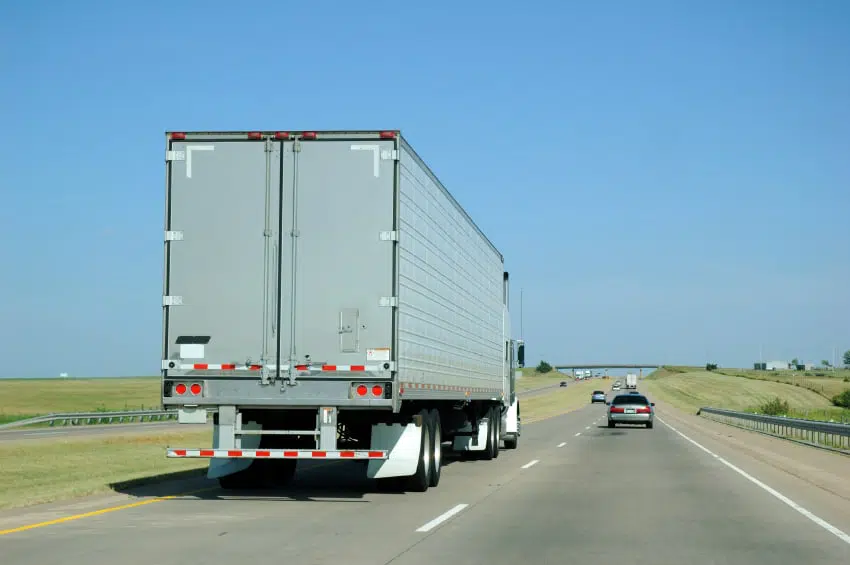Tractor-Trailer Underride: Not Your Average Rear-End Accident
Rear-end car accidents. They’re equivalent to a fender bender, and all parties can leave with just an exchange of insurance information, right? Wrong. These accidents can be quite dangerous, especially when a tractor-trailer enters the mix.
What Is an Underride Crash?
When a car hits the back of a tractor-trailer, a standard rear-end crash often becomes an underride crash, possibly the deadliest type of motor vehicle accident. An underride crash is when a passenger car slides under the trailer of an 18-wheeler. Underride crashes often shear off the roof of the car, making decapitation and crush injuries a serious threat to the vehicle’s passengers.
In a rear underride collision, a car slides under the back of the trailer, coming to a stop only after hitting one of the rear wheels or another part of the truck’s underbelly. Rear underrides can occur from typical accident causes, such as distracted driving, but are also commonly caused by a truck that is unexpectedly slow. The driver of the car may not realize the tractor-trailer’s low speed until it is too late to stop. A truck may be moving slowly on a high-speed road as it returns to the road from the shoulder, slows to exit the road, or slows for a railroad crossing.
A side underride collision usually occurs when there is reduced visibility, either at night or when the sun is interfering with a driver’s vision. In this case, the collision occurs at a perpendicular angle, like a T-bone crash. This can happen when a truck driver is attempting to cross or turn onto a street or highway, is attempting a U-turn, or is trying to back across traffic.
It’s even possible for a truck to strike another vehicle from behind and cause a front underride collision, rolling over the back of the passenger car and often causing great harm to anyone in the backseat.
Preventing Underride Crashes
The main way to prevent underride crashes is through the use of a device called an underride guard. Underride guards are a kind of metal bumper that hangs from the back of a high-riding semi-trailer (usually striped red and white) to stop a smaller vehicle from sliding underneath in the event of a rear-end collision. More recently, side underride guards have been shown to be an effective barrier as well.
Sounds simple enough, right? Sometimes the simplest solutions are the most effective. Back in 2011, the Insurance Institute for Highway Safety tested the guards and found that they were effective in stopping cars from sliding underneath semi-trucks (Forbes).
Speed is an important factor, however, as “effective” guards are often tested at speeds around 35 or 40 mph. A car traveling at a 70 mph highway speed may still crash through the guard.
Underride Crashes and the Law
In early 2018, a bipartisan measure to mandate underride guards on truck trailers, called the Stop Underrides Act of 2017, began making its way through Congress. The bill required guards on both the front and sides of trucks, both of which are currently optional safety measures.
In addition to this bill, the National Highway Traffic Safety Administration published a regulatory proposal to upgrade rear-impact guard requirements, making them more effective. The proposal was created in 2015, but has yet to be implemented.
These regulations from safety organizations and bills attempting to make their way through Congress are met with objections, however. Trucking companies and other organizations argue that the safety measures add weight, reduce gas mileage, and are not cost-effective (Trucks.com). Is that worth a few lives to them? It sure seems that way.
What to Do If You’ve Been in an Underride Crash
If you are involved in an underride crash, you are most likely dealing with catastrophic injuries and vehicle damage. If the truck had side or rear guards, hopefully your damages are less severe.
If not, the trucking company could be found very liable in a civil case. While the installation of rear and side guards is not strictly mandated by the government, it is common industry knowledge that these devices save people from horrific crash outcomes.
The debate over underride guards, in addition to the complexities of determining fault in any motor vehicle accident, make getting compensation difficult. In addition, there’s been a recent rollback of transportation safety legislation, courtesy of the current administration. And from the moment a semi-truck accident occurs, the trucking company and its insurers are already working to devalue your claim.
We at Hipskind & McAninch, LLC, offer a truck accident settlement calculator to help you figure out what your case may be worth after being hit by a truck, but we also offer something better: our personal attention, for as long as you need it. As a Belleville-based law firm that handles truck accidents on behalf of victims, we’ve seen many underride crashes on major highways in the St. Louis area like I-70, I-55, I-64, I-255; and state routes like 15, 159, 161, and 13.
We keep ourselves up to date on truck industry standards and regulations, both federal and state. Truck accidents are not the same as car accidents, and you don’t want a car accident attorney who’s never dealt with powerful trucking company interests. We have, and from both sides of the table—both John Hipskind and Brady McAninch used to work for big defense firm in St. Louis, representing insurance companies against accident victims. Now, we put that knowledge to good use and only help people who have been injured.
If you’d like to speak with an experienced Belleville truck accident attorney regarding an underride crash, please call us for a free consultation at (618) 641-9189. If there’s compensation out there for you, we won’t rest until we get it.
Category:
